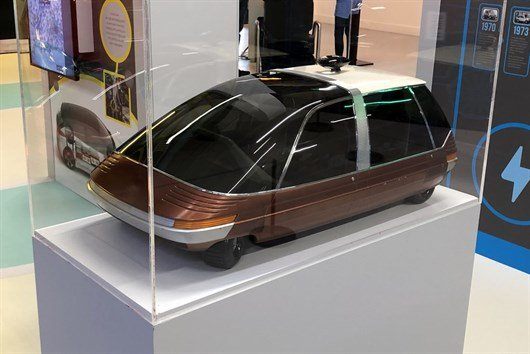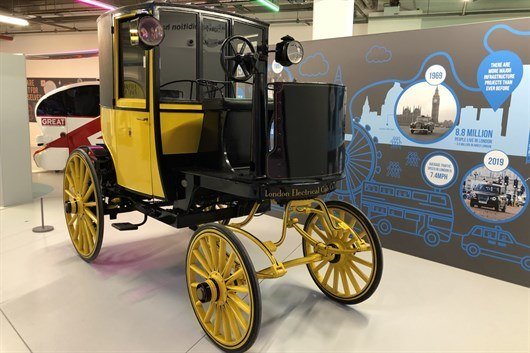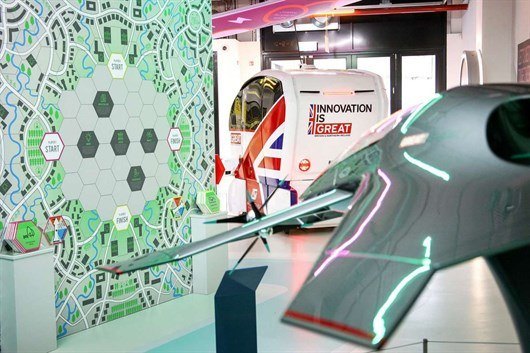Classic concept cars celebrated at British Motor Museum exhibition

Classic concept are to be celebrated as part of a new exhibition. The display at the British Motor Museum at Gaydon is called 'The Car. The Future. Me.'
The exhibition looks back at the inventors of the first cars and their visions for the future. Visitors will be able to discover what designers in the 20th century thought cars would look like in the 21st century and whether their predictions have come true.
Visions of the future from times past include the 1970 Crompton Leyland Electricar. Styled by Michelottis and based on standard Mini parts it was powered by 24 lead-acid batteries driving two 3.9hp (2.9kW) motors. It had a stop speed of 33mph and a battery life of 40 minutes.

Also on show is the Triumph XL90. Conceived in 1967 as the car of the year 2000, it was the work of STandard-Triumph stylist E. Pepall. The XL90 was packed with novel features, for example it could read electro-magnetic pulses from cables buried underneath motorways to keep on track.
There was also an engine governor to control the car's speed and a radar unit that would detect cars ahead and adjust the XL90's speed accordingly. Sound familiar? It also looks familar with a definitely flavour of the modern MPV design that found popularity with the Renault Espace.
Like many cars today, the Triumph XL90 used plastic panels. Cutting edge technology included a windsreen that vibrated faster than the human eye could detect in order to throw rainwater off the screen.

And if you thought electric cars were a modern invention, think again. This 1897 Bersey Electrical Cab was powered by a new-fangled electric engine - more efficient to run than a horse, and also quieter than a noisy internal combustion engine.
It could travel at either three, seven or nine miles per hour and had a range of 30 miles. Returned to depot. its batteries could be changed in three minutes and the cab would be off working again. Sadly the batteries were too heavy for the cab and the subsequent shaking damaged the solid tyres.
In total, 13 were made by reliability issues and opposition from traditional horse drawn cabbies meant the end of the road for the 'hummingbird' (so-called because of the hum from its electric motorors. Two years after it was launched, this Bersey reached the end of the road.

As well as classics cars, the display also looks autonomous pods as solutions for driverless vehicles in communities with reduced mobility.
Finally the exhibition will look ahead to what the future could hold, bringing together visions of designers, engineers and the general public. Visitors will then get a chance to use their imagination and design what they see as the car of the future.
Stephen Laing, curator at the British Motor Museum, said, 'We are delighted to be hosting this thought-provoking exhibition which we hope will spark debate amongst our visitors. Will there still be cars in 100 years’ time? How we will drive them? Will we drive at all?
'As visitors journey through the exhibition they will be asked a series of questions about how they think the car might change in the future and how it may affect them. For example, do they like the idea of being a passenger in a fully automatic pod and would they miss driving? Finally they will be asked to decide how they feel about the future, as it has many unknowns!'
The exhibition is included within the Museum entrance fee. Museum entry is £14.50 for adults, £12.50 for concessions, £9 for children (5-16 years) and under 5s are FREE. There is also the option to Gift Aid or donate your entry fee and get an Annual Pass in return, at no extra cost.
To find out more visit the British Motor Museum website.
Comments
Compare classic car insurance quotes and buy online. A friendly service offering access to a range of policies and benefits.


 Keith Moody
Keith Moody
 NEC classic motor show 2020 postponed due to Covid 19 concerns
NEC classic motor show 2020 postponed due to Covid 19 concerns
 Classic car auction house Coys goes into administration
Classic car auction house Coys goes into administration
 Motor racing great Sir Stirling Moss dies aged 90
Motor racing great Sir Stirling Moss dies aged 90
 Alfa Romeo anniversary races set for Silverstone
Alfa Romeo anniversary races set for Silverstone
 Government to make E5 fuel available for classic owners
Government to make E5 fuel available for classic owners
 Plans to introduce cleaner fuel could damage more than a million classic cars
Plans to introduce cleaner fuel could damage more than a million classic cars
 Top 10: Classic cars from the Gulf motor racing heritage collection
Top 10: Classic cars from the Gulf motor racing heritage collection











Add a comment